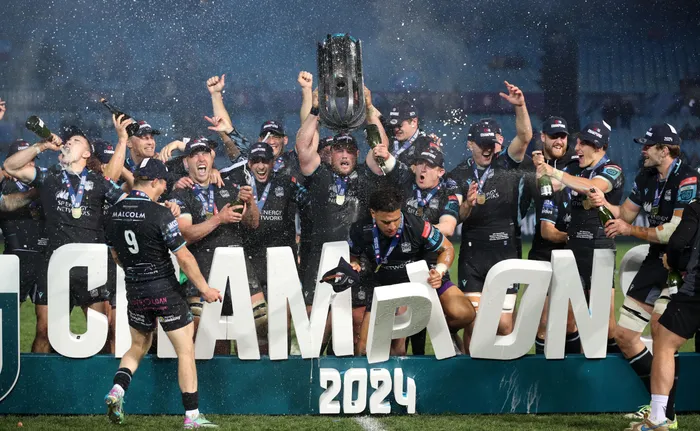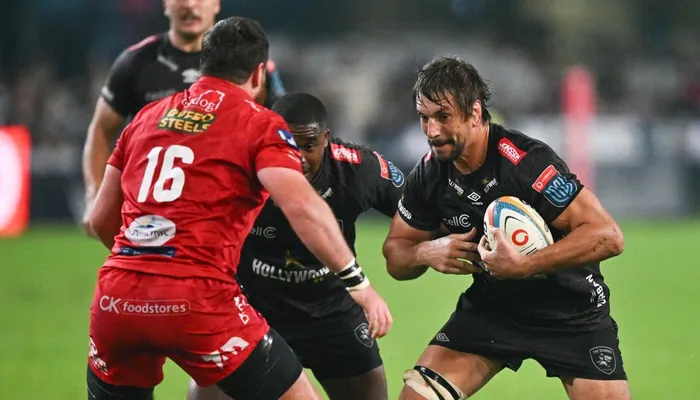Fixing the flaws: How the URC can reach its full potential
United Rugby Championship

One of the URC's strengths is the fact that three different teams have won the first three iterations of the tournament. Last season it was Glasgow, and before that Munster and the Stormers. This campaign could again see a new winner, as the competition enters its play-off stage. Photo: Backpagepix
Image: Backpagepix
There is no doubt that the United Rugby Championship (URC) is thriving, but four seasons in, the tournament continues to be hamstrung by structural issues that prevent it from reaching its full potential.
From an overstretched season and player availability problems to financial imbalances and regional under-performance, the URC faces hurdles that require urgent attention.
Here, we look at what’s holding the competition back – and what needs to change for it to truly ‘URC = Best League’...
Stop the breaks
Perhaps the most glaring problem with the tournament – and by far the most difficult one to address – is its length. This season will require over 40 weeks to complete 21 matchdays, including the play-offs.
That’s as long as the English Premier League – which consists of 380 matches – and which also squeezes in the League Cup, FA Cup, pan-European competitions and Fifa international windows.
There are too many momentum-stalling breaks during the season, which stifle all sense of urgency.
In November, there are the Autumn Internationals, followed by weekends allocated to the Champions Cup and Challenge Cup.
February and March are disrupted by the Six Nations, and thereafter again by the EPCR competitions.
It makes the URC a long, drawn-out affair that must rebuild intensity after every hiatus.
As long as there is no global rugby calendar, the URC will continue to struggle in creating a compelling climax, as is currently the case, with yet another break before the play-offs.

Siya Kolisi Springbok captain Siya Kolisi has, either through injury or due to being rested, missed seven regular-season matches for the Sharks in the URC this season. Photo: BackpagePix
Image: BackpagePix
Free the Boks
Another frustration, prompted by the ridiculous lack of a global rugby calendar, and a pressing concern for South African teams – the Sharks and Stormers foremost, who have invested heavily in Test players – is the availability of the Springboks.
The Boks’ current schedule means those players are competing year-round with no natural breaks. SA Rugby is forced to engineer rest periods around the June Internationals, the Rugby Championship, and the Autumn Internationals.
As a result, big-name players – such as Siya Kolisi, Eben Etzebeth, Damian Willemse, et al – miss important portions of the URC.
Northern-hemisphere teams face a similar issue during November and the Six Nations, though to a lesser extent.
It is understandable that SA Rugby wants to protect the interests of the Boks by managing their players, but it comes at the cost of their URC teams and the tournament’s overall prestige.
These are star players missing from provincial teams – key figures who sell tickets and boost viewership.

Springbok and Sharks lock Eben Etzebeth is one of the best-paid players in South Africa. Photo: Backpagepix
Image: Backpagepix
Relax the Cap
Currently, South African sides are constrained by the power of the rand.
Restricted to a salary cap of R85 million, with four ‘marquee’ players allowed outside of this cap, the Bulls, Lions, Sharks and Stormers must manage their limited resources over 53 squad members.
There is no way these teams can retain or compete with their European counterparts, or the lifestyle and salaries offered by Japan.
Owen Farrell, considered one of the highest-paid players in the world, reportedly earns around R28 million a year. Springbok Faf de Klerk was earning up to R16 million per annum.
Financial sustainability is crucial, of course, but as long as South African teams are constrained by this cap, their best players will always be at risk of leaving the country – and the URC – for greener pastures.

Scarlets rugby The Scarlets progressed to the play-offs of the URC this season having won nine games, lost eight and drawn one. Photo: BackpagePix
Image: BackpagePix
Help the Welsh
Unsurprisingly, after four seasons of regular action, the Irish franchises are collectively the most successful conference in the tournament.
After 288 games, they have won 62% of them, followed by the South African conference (57%) and then the Scottish-Italian group (43%).
The four Welsh franchises – Cardiff, Dragons, Ospreys and Scarlets – have managed just 98 wins from those regular season games, a 34% win rate.
No Welsh team has finished higher than eighth, nor progressed to the semi-finals.
No more than one Welsh side has reached the top eight in a given season. This year, it is the Scarlets, who face Leinster in the quarter-finals.
It is a real pity, because Welsh fans deserve better – and the tournament needs a strong Welsh presence to be truly successful.
It is little surprise then that the Welsh Rugby Union are considering cutting one franchise and consolidating their efforts.
Cutting a franchise may be inevitable – but it must come with renewed investment, a real plan for development, and a vision for Welsh rugby’s role in the URC.
Who Is That?
We all know Leinster are a rugby powerhouse – but why is that the case?
Munster are a 146-year-old institution, while Glasgow Warriors were founded in 1872. Cardiff Rugby followed just four years later. Italian outfit Benetton boasts nearly a century of tradition.
These are old clubs with storied histories, but the average South African remains largely unaware of their legacy or standing.
The URC undoubtedly hopes to build natural rivalries between the European and South African teams, but perhaps a bit of education could go a long way in improving viewership and engagement when teams from the two hemispheres meet.